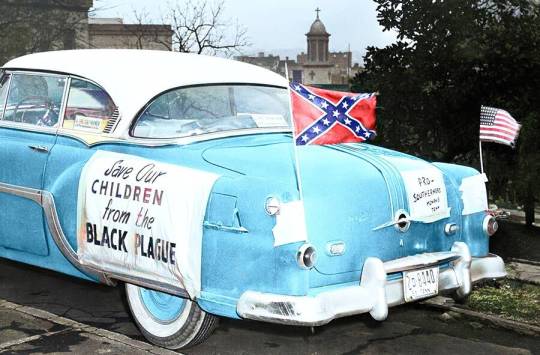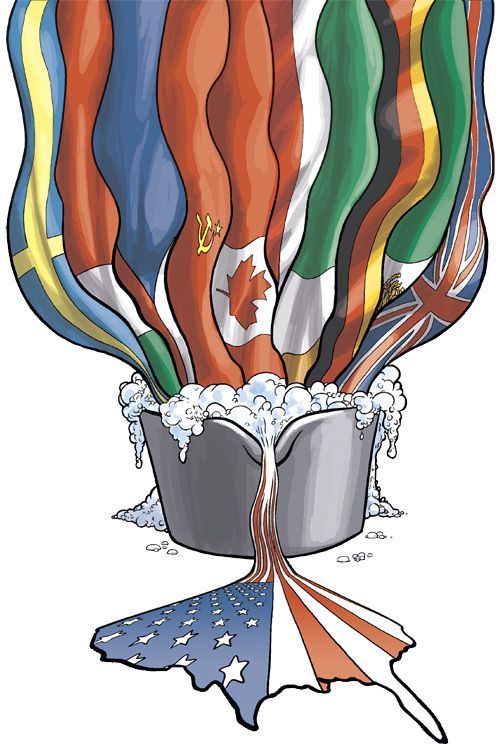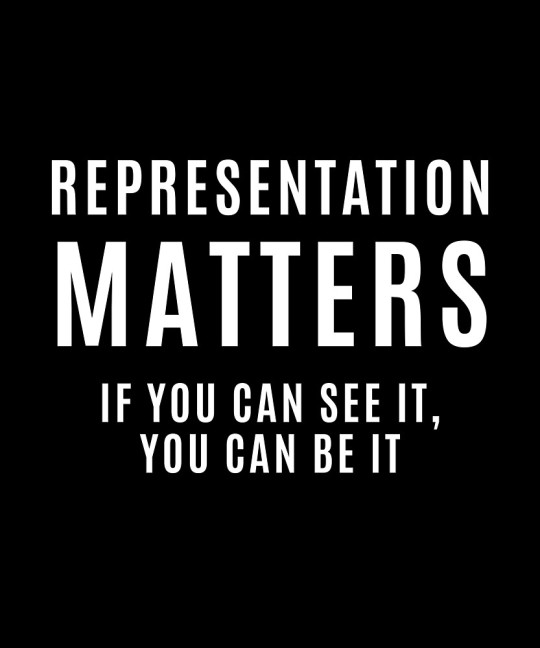Don't wanna be here? Send us removal request.
Text
Media Post #3
Crash Course video on Slavery: Slavery - Crash Course US History #1
The subject of this video is slavery. This video is part of a series on YouTube hosted by John and Hank Green called "Crash Course”. The series consists of history and science topics shortened into about 15 to 20 minutes videos that are informative, but sill grasp the attention of the audience by engaging them in different ways throughout the video. This video went into what slavery was like in terms of different type of slaves, slave revolts, escaping, and slave life (ex: religion, family, marriage, etc.,) I chose this because in the duration of this course we talked about economic inequality as well as misrepresentation in the media when it comes to those in the black community. This video talks about the roots of these issues as well as giving some details now often show in history books.

This media generates a conversation about how to celebrate racial diversity but also being able to acknowledge what the cost was. People were ripped from their homes and forced into slavery. Not allowing them to read or write, although some still did. Not allowed to own anything for their own and participating in back-breaking labor. This feeds into a conversation about the economic setbacks that were a product of slavery. After slavery, in the south black people could become tenant farmers that often limited their ability to break out of their economic status. Or if they flocked to the north, they still faced segregation, just under a mask as red-lining, lease-restrictions, etc., As Hank Green had discussed in the video, even though the north had outlawed slavery, they were still involved in the distribution side of things. They had the factories that helped transform cotton into clothing that sometimes when right back to the south as clothes for the enslaved.

When viewing this video, I immediately thought about our class discussion on how black people are often portrayed in media. Media at the time of slavery and segregation was so derogatory towards black people and unfortunately that is all some white people saw, never actually interacting with a person of color. Same situation now, most of the criminals and homeless people shown on the news, majority of the time, are black.

Even religion wise, black people are serotyped as very into their religion, often showing a very enthusiastic and loud church choir in movies or TV shows. All without showing the realities behind those stereotypes. Like I mentioned above in my essay, black people have been setback economically, not able to build up generational wealth because of certain barriers (racist jobs, red-lining, segregation, etc.,). As with religion, when black people were enslaved, they weren’t allowed to do much besides do their work. The one outlet they had to feel a sense of community and family was religion. So, when media uses those stereotypes, it's extremely harmful to the black community, it doesn’t show the whole story.

picture sources:
https://www.ferris.edu/HTMLS/news/jimcrow/cartoons/homepage.htm
https://www.pbssocal.org/black-history-month
https://www.wpr.org/lasting-effects-redlining-milwaukee
http://ap.gilderlehrman.org/essay/origins-slavery-0
0 notes
Text
Media Post #2

The subject of this photo is colorizing Jim Crow era photos. It is apart of a gallery of photos that are colorized by Matt Loughrey for an article “33 Jim Crow Pictures That Depict The Real Brutality of American Racism” by the website All That’s Interesting. The picture shows a vehicle with an American and Confederate flag tapped to the back. As well as, some signs attached to the car, one of which says “Save our children from the black plague”. I’m assuming which means save white children from black people because they are a “disease”. This car was parked outside of Tennessee’s Capitol Hill while the Governor at the time, Frank Clement, was meeting with pro-segregationists.

I chose this photo out of the 33 in the gallery because it reminded me all too well about cars I’ve seen in my small town. I remember seeing trucks with confederate, American, or blue lives matter flags on the back of their truck in my high school parking lot. I think white people think that racism is “over” per se, but it is still alive and well. It may not be directly in front of our eyes all the time like in this photo or like in my school parking lot, but it’s still out there. Even in things like microaggressions and business dress codes that don’t allow natural hair for black people. Racism is taught, that person who decorated the car in that photo passed on their racist thoughts to the next couple of generations. While some may be able to unlearn their racist behaviors and break the generational cycle, some are not willing to. For fear of losing their family or just simply because they believe that what they were taught was the “right” way.
This picture represents racial and ethnic identities by showing what black people had to deal with on a daily basis during the segregation era and even after that ended. Social segregation didn’t end with the Jim Crow era, the effects of this time trickled down and are still seen today. Even in the northern part of the country, when segregation wasn’t even a thing, there are still discriminatory practices. This represents racial identity by uniting black people with universal racist experiences.
This media generates a conversation about the timeline of segregation. I think when a lot of people today think of the Jim Crow era, they think that it happened a long time ago and that its effects aren’t around anymore. I can even say myself that I often thought this, not seeing it around me often, I figured “out of sight, out of mind”. This is just simply not how it is. The Jim Crow era came to a close in the later 1960′s. That was not that long ago, that was only about 50 years ago. My generation's grandparents were apart of the end of it, that feels way closer if you think about it that way.

*Ruby Bridges left, 1960, right, 2010*
The Segregation may be over but the social and economic repercussions stay standing. There is a heavy gap in wealth and personal confidence between white and black households. This reminds me of the Doll test we had discussed in class. Things like the signs on the car in the picture I chose can have unfortunate effects on how young black people see themselves. This is shown in the doll test when the majority of black boys and girls preferred the white doll to the black doll in the original and the most recent experiment. Even in my knapsack discussion with my friend Safi she talked about feeling judged by her white peers for wearing her natural hair or dressing more “bummy” because she didn’t want to have the “lazy black person” stereotype used against her that she has experienced before.

Sources:
All That’s Interesting. “33 Colorized Jim Crow Pictures That Depict The Real Brutality of American Racism.” All That’s Interesting, November 4, 2020, https://allthatsinteresting.com/colorized-jim-crow-pictures#14.
“Parade of Tucks with Trump, Confederate Flags Blaze Down L.A. Streets.” YouTube, uploaded by TMZ, July 4, 2020, https://www.youtube.com/watch?v=e9t3VLZ9-2w.Stacey King. “Ruby Bridges.” Pinterest, https://www.pinterest.com/pin/658370039245728808/.
Planned Parenthood NH Action Fund. “Addressing systemic racism and standing with Black communities.” Planned Parenthood, June 4, 2020, https://www.plannedparenthoodaction.org/planned-parenthood-new-hampshire-action-fund/blog/addressing-systemic-racism-and-standing-with-black-communities.
Stacey King. “Ruby Bridges.” Pinterest, https://www.pinterest.com/pin/658370039245728808/.
0 notes
Text
Media Post #1

For my first Media Post I will be analyzing this data set by Annie E. Casey Foundation. This chart shows the U.S. population by race and ethnicity from 2018 data. It compares those data pieces by showing the total against just the children population in the U.S. Showing that with each generation it with become more mixed and less white. In the total column the white section is 60% whereas the other percentages are all less than 20%. In the children column, that changes and white drops to 50% and the other percentages group up to 7%.
This image/data sets up a conversation about a truth that white supremacists are afraid of. That the United States, over time, is becoming increasingly mixed race and less white people. This has been an ongoing discussion that I myself have taken part in over social media like twitter. It is becoming more and more acceptable to become partners with that doesn’t have the same background as you. Which means that more people are mixed race than ever before in this country. I think this chart does an okay job in representation that mixing of race and ethnicity by have options like “Multiracial” and having distinctions between American Indian/Native Alaskan and Native Hawaiian/Pacific Islander. That is great, however, this does not separate by different indigenous tribes, which may make those people feel miss-representation, or grouped together even with different ways of life.

I think the representation of racial and ethnic identities in popular visual culture does not equate to the data set I showed above. Until recently I would say that I would not see people of color in lead roles or even side roles in movies or TV shows I watched growing. Only within the past couple of years have I seen people of color in respected roles and not just used as comedic relief like I had talked about with Safi for the Knapp-Sack Video Project. I think can affect people's self-image if they are not represented equally. It can make them lack self-confidence which make them think they can’t escape their socioeconomic class or come to terms with their own sexuality.

Sources:
Annie E. Casey Foundation. “What the Data Say About Race, Ethnicity and American Youth.” Annie E. Casey Foundation, June 17, 2018, https://www.aecf.org/blog/what-the-data-say-about-race-ethnicity-and-american-youth/.
Huxdesigns. “Representation Matters If You Can See It You Can Be It.” Redbubble, https://www.redbubble.com/people/huxdesigns/works/36956299-representation-matters-if-you-can-see-it-you-can-be-it.
Kathleen McLain. “The Meling Pot V. The Salad Bowl.” Mundane and Divine, December 9, 2015, https://mundaneanddivine.wordpress.com/2015/12/09/the-melting-pot-v-the-salad-bowl/.
Rawan Elbaba. “Why on-screen representation matters, according to these teens.” Milwaukee PBS, November 14, 2019, https://www.pbs.org/newshour/arts/why-on-screen-representation-matters-according-to-these-teens.
0 notes